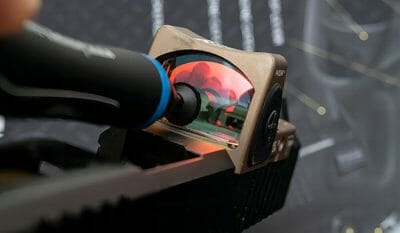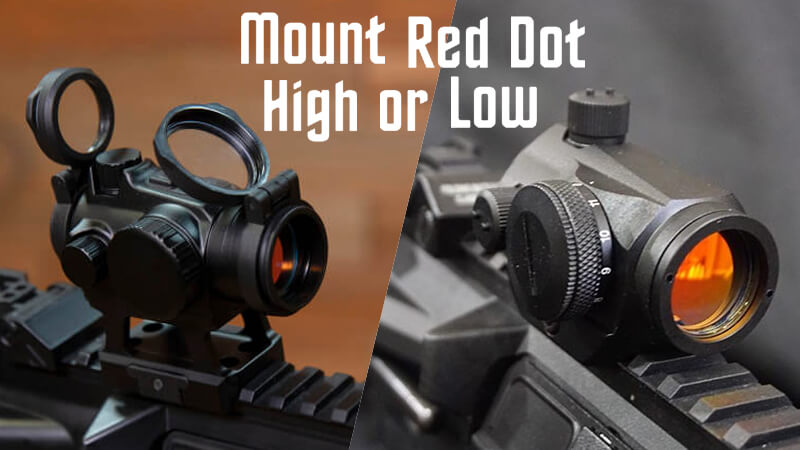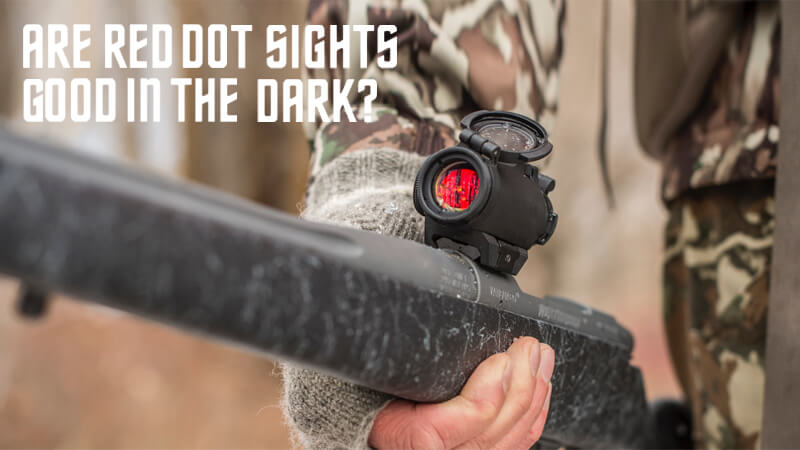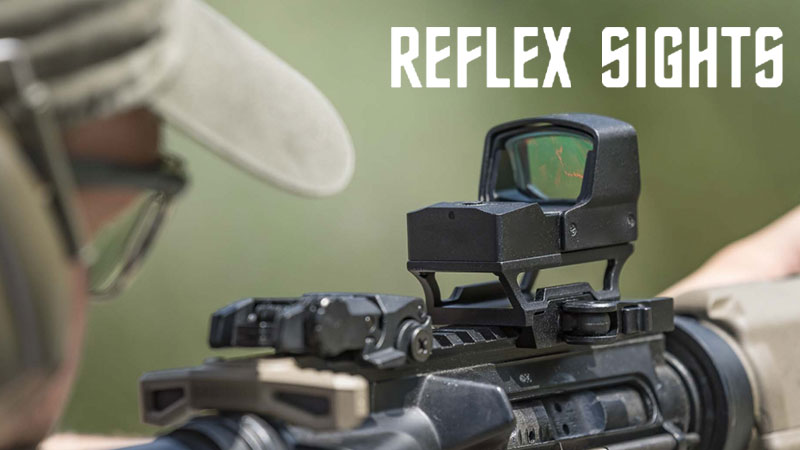Decided to buy a red dot sight to up your shooting game? Want to know how it works? More importantly, how do you keep your red dot sight in good working order? This blog provides simple facts to help you better understand your red dot sight.
If your aim needs work and you need a tool that helps ease this task, a red dot sight is a perfect device for you. Capable of delivering fast target acquisition without loss of peripheral vision.
What Is Red Dot Sight?
A red dot sight(RDS) is an optical sight attached to a firearm, bow, or crossbow for precise targeting. A LED produces the reticle that is reflected from the lens to the eye of the marksman.
The reticle is the marking on an optical device that provides a reference point and enables the aim to be centered.
Red dot sights are for close to mid-range shooting. However, its optimal range is 100 or fewer yards. They are easy to utilize, especially for beginning shooters. Unlike iron sights, the shooter doesn’t need to change focus after acquiring the target. The red dot superimposes with your target making it simple for the target and the sight to align.
Premium red dot sights are manufactured with aircraft-grade aluminum housing alloy. Cheaper versions are made with plastic carbon fiber. RDS is not a scope because it lacks image magnification capabilities.
This device functions by using a light-emitting diode(LED) and a tilted mirror. The mirror reflects the beam from the LED to the lens of your sight. This mirror is specifically coated only to reflect red light. The result produces a red circle dot reticle on the lens facing the shooter. New versions can alter the form of their reticles from dot, star, cross, or Bullseye.
3-Volt CR2032 batteries power the LED. They are coin cell batteries that fit in a circular slot, usually found at the base of the device. This power source has 150 hours of battery life at the maximum brightness setting. 30,000 when it is at a minimum brightness setting.
The latest models have shake-awake technology. It turns off automatically when idle and turns on with the slightest movement due to the motion sensor built into the device. This technology extends optimal battery life.
Red dots have anti-reflective lens coatings to minimize glare. Its brightness modes make it useful in any form of light condition. They come in manual or auto mode.
It also has elevation and windage dials that you can turn to change the reticle position. They are used for sight adjustment at a predetermined distance. Most have adjustment caps to prevent dust and liquid from entering the dials.
There are two red dot sights classifications: Open and Enclosed. Their distinction is that the enclosed dot sight has a hood and an extra lens. These additions protect the reticle from tiny particles that impede clarity.
The open red dot sight makes up by being lightweight and compact. Useful for concealed firearms like handguns. The peripheral vision is unhampered when using an open RDS—maximizing the situational awareness of the marksman.
Why Is My Red Dot Sight So Blurry?
Blurry red dot sights are caused by dust, water stains, oil residue, device malfunction, and environmental factors such as mirage and fog.
Aside from device malfunction, carrying extra dry lens wipes or a microfiber cloth when using a red dot sight.
How these things end up in your lenses is listed below:
- Dust and Water Stains
Lens glass cools the air causing condensation. Moisture build-up provides ways for airborne particles to stick.
Snow, rain, and fog contain small amounts of dust that, if not appropriately wiped, leave visible stains or water spots.
- Oil
Sweat from the wielder’s hand stays on the surface they touch. Fingerprints on the lens are usually the result.
Droplets of lubricant, when oiling firearms, may end up on the lens.
- Device Malfunction
While the lens of a red dot sight is durable, it can still take damage from misuse or age. Here are possible damages the device could have:
- Fractured lens
- A faulty LED
- Lens coating corrosion
- Mirage
Shooting a weapon in arid conditions causes the sight picture to blur. Mirage results from hot air rising from the ground hampering the sight picture.

How to Clean Red Dot Sight?
Cleaning a red dot sight requires the proper use of a comprehensive lens cleaning kit. The kit includes a Lenspen, compressed canned air, microfiber cloth, lens cleaner liquid, swabs, and anti-fog solution.
The necessary steps for optimal cleaning are listed below:
- Safety first when dealing with firearms. Remove the cartridge and make sure the chamber is empty of bullets. Always point the nuzzle away from you. Your bare hand must never touch the lens.
- Choose either the front or the back exterior lenses to start cleaning.
- Blow condensed air to remove small particles not stuck to the lens. Not too close as it can cause lens coating damage. You can use a manual air blower, but it is not as effective.
- Use the brush side of the Lenspen to clear the internal corners of the sight housing.
- Wipe with the carbon pad of the Lenspen to precisely clear oils and water stains. Circular motion works best.
- Dip or spray the cleaning swab in the cleaning solution. The amount must be just enough to wet the cotton bud.
- Use the swab to wipe in a circular motion starting from the center and going wider as you reach the alloy frame.
- Wipe the excess moisture on the lens with a microfiber cloth or dry lens wipes.
- Wet the swab with the anti-fog solution—the same amount as the lens cleaner. Follow step 8.
- Do step 9 but wipe with the unused side of the microfiber cloth. If you are using lens wipes, use new ones.
- When not in use, its storage must be dry and well-ventilated. Turn off the brightness setting.
Take Away
Red dot sight is a great companion for both seasoned and starting shooters. During every use, dirt and moisture sticking to the lens are always a given. Proper maintenance and storage are essential for increasing lifespan like any device.
We hope this article enlightens you on all things red dot.
Now go and get that Bullseye!









Leave A Comment
You must be logged in to post a comment.